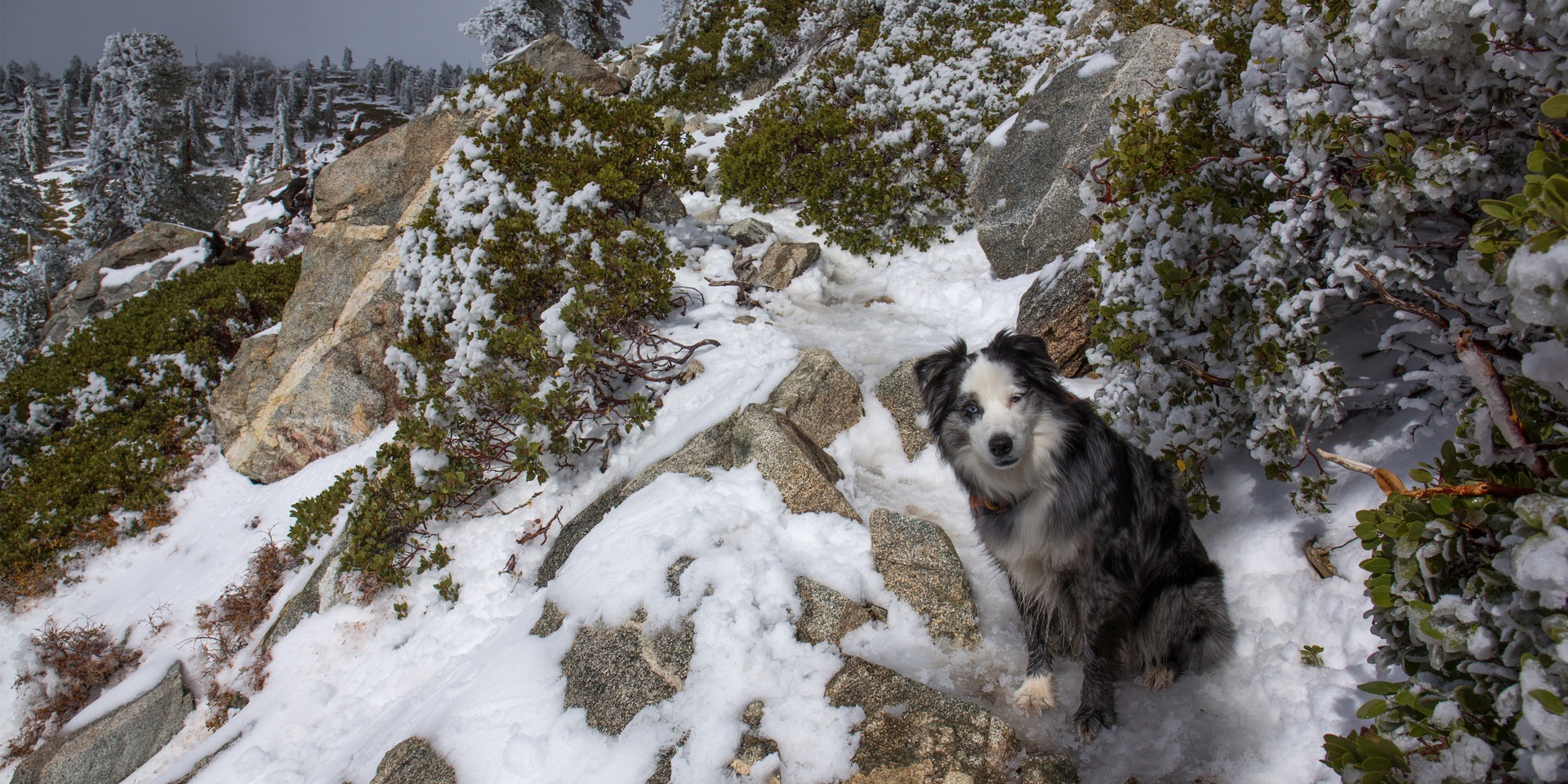You are here
There is something about running or hiking with your four-legged friends that can be very rewarding. And not just for us humans. Kali, my 4-year-old Australian Shepherd, gets so excited when my backpack and trail shoes appear from the closet. She makes it very clear that she WILL NOT be left behind.
Deciding where to take your dog, or if they should come along on a particular adventure, is not always an easy task. Kali has been through a lot of situations on the trail, including exploring the wilderness of New Zealand, spending nights in a bivy, surviving attacks from other K9s, experiencing hut living (more glamorous than the previously mentioned bivy), and summiting a 14,000-foot mountain. Through all these adventures, she and I have learned a lesson or two about dog etiquette on the trail.
Some things to keep in mind while taking your dog on the trail:
- Always have your pet under control. If the trail allows dogs to be off leash, make sure your dog is under voice control. This is vital to ensuring your pooch won't chase after wild animals or approach other trail users who don't want to be approached. Sadly, not everyone loves animals, and it's important to be considerate of other trail users. Hikers without dogs have the right-of-way on the trial; you should step to the side and allow others to pass.
- The Leave No Trace philosophy also applies to your dog. Make sure you aren't leaving anything behind that would be unpleasant for other people on the trail. This includes poop! Pick it up, and don't just bag it and leave it. Pack that sh*t out! Literally.
- Know your dogs, their strengths, and their limits. Figuring out that the trail it too long or too dangerous for your pet 5 miles down the trail can put a major damper on your day. Do your research before leaving home. Check the trail conditions. Know how long the trip will be and if there will be water sources available. Be prepared to carry your dog if it tires out or gets injured.
- Carry water, food, and proper gear for your dog. Just like a human, dogs will burn more calories than usual on the trail, so bring some extra treats to keep them going. Determine how much water your dog might need. Generally, a dog will need approximately one ounce of water per pound of their body weight for an average day’s hydration; however, a dog that will be participating in strenuous activity will likely need more. Carry a foldable water bowl and offer your pet a drink each time you need one. In cold weather, you may want to bring a jacket or coat for your dog, and if it has sensitive feet, booties are a good idea. Remember to acclimate your dog to his or her new gear before you leave on your adventure. Ruffwear and Kurgo make excellent products.
- For an overnight trip, make sure your dog is comfortable in a confined space such as a tent. Make sure that your tent will fit everyone and their gear. It's one thing to be cozy, and it's another thing to actually get some sleep.
- Know the trail regulations for where you're going. Dogs are not allowed in undeveloped areas of national parks and wildlife refugees. They are typically welcomed on-leash in state parks. There is, however, a debate on if they should be allowed in wilderness areas. What do you think?
- Be courteous to people and other dogs on the trail. Even if your pup is under voice command and under control without a leash, you should listen to other pet owners or recreationists if they ask you to leash your pet. There are many people who are afraid of dogs, and handling dog encounters when one dog is on leash and the other is off is difficult and can often lead to conflict.
Be prepared, enjoy your time outdoors with your beloved pups, and be safe. I hope you enjoy the photos of Kali and some of the pups from other Outdoor Project contributors. Share your dog's favorite outdoor adventures in the comments below.





Comments
That being said however, after venturing out on over 700 adventures throughout the west in the last 3 years I can safely say that there are appropriate and inappropriate places to take dogs.
What I found? Simply, I saw far more wildlife whenever I ventured without Albert. Dogs are already prohibited from undeveloped areas in national parks and entirely in wildlife refuges, but surprisingly they're still permitted in designated wilderness areas. This is legislation I'd strongly support changing if we want to fully protect our remaining wilderness.
Does anyone else think dogs should be prohibited from federally designated wilderness areas? I'd love to hear people's thoughts on this.
Sign In and share them.